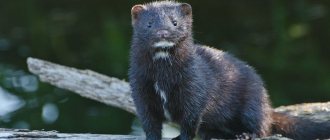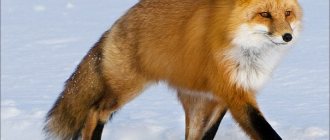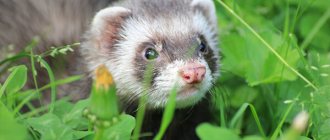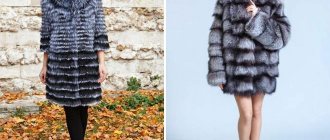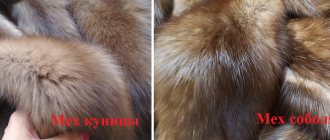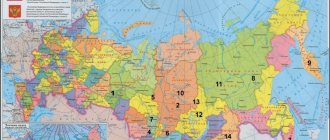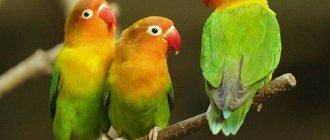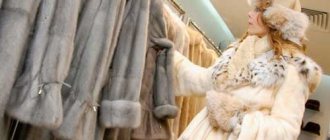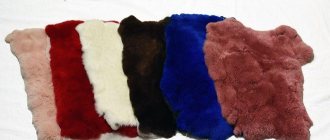The marten is a small predatory animal from the mustelidae family. The first ancient relative of the marten appeared about 35 million years ago. Currently, the genus of martens is represented by eight modern species and one extinct one.
Martens have an excellent sense of balance, the ability to quickly climb trees and make jumps up to 3-4 meters long. Their feet can turn 180 degrees, and their sharp claws and fangs cause dangerous lacerations. Such characteristics of the animal allow it to be an excellent hunter and successfully attack prey whose size exceeds its own.
In general, representatives of the marten genus are not endangered, but in some regions, due to intensive hunting and shrinking natural habitats, the populations of these animals are catastrophically declining. This became the reason for the inclusion of subspecies of the predator in the regional Red Books.
Characteristics and description
Most species of martens are active at night. Only the harza leads a diurnal lifestyle. Each adult has its own area, with the males' areas occupying a larger area. In winter, when there is much less prey, martens are forced to expand their territory for daily crawling.
After a hunt, a predatory animal usually rests in hollows or crevices of trees, squirrel holes or bird nests located high above the ground. Martens live in one territory throughout their lives, but do not have one permanent shelter. They choose several suitable places in which they periodically stay for daytime rest.
Animals do not hibernate. Before the onset of cold weather, they stock up in hollows and wait out the bad weather without leaving their shelter.
By the nature of their behavior, martens are loners. They can unite in pairs only for a short time during the rutting period. The exception is the harza, which can form groups of several individuals to hunt together, which allows it to cope with fairly large prey.
What does it look like
The appearance of martens has the following features:
- the body is elongated, flexible, the back is slightly curved;
- the head is small, with an elongated muzzle, the neck is long and very mobile;
- the ears are small, rounded, located on the sides;
- paws are thick, short, with five separate toes;
- the tail is long and fluffy.
The color of the predator depends on the variety. The predominant tones in the colors of martens are various variants of brown.
The sizes of some types are shown below.
| Variety name | Body length, cm | Weight, kg |
| Kharza | 70 | 5,8 |
| Ilka | 75 | 5 |
| Belodushka | 55 | 2,3 |
| Japanese sable | 54 | 1,6 |
| American marten | 45 | 1,3 |
Sable and marten: differences
Japanese sable
Animals are representatives of the same genus and have a certain external similarity. You can distinguish a sable from a marten by some characteristic features:
- sable has shorter mustaches;
- his ears are smaller, with pointed ends and moved back;
- The marten has a bushier tail;
- The sable's body is more compact and heavier.
The animals also differ in their habits: the sable lives on the ground and makes its nests between the roots of trees and in hollow trunks of dead wood, while the natural habitats of the marten are branches located in the upper tier, squirrel or bird nests.
The shiny and evenly colored sable fur is valued much more expensive than the fur of the coarse-haired marten.
What is the difference between marten fur and sable fur?
The main differences between the sable and the marten, which is similar in appearance and lifestyle, are as follows:
- The sable's fur is slightly darker, silkier, thicker and softer than that of the marten; has some gray hair.
- The spot on the throat is smaller in size with various shades of yellow, and in a dark sable is barely noticeable.
- The top of the head of sables is slightly lighter than the ridge - martens have a similar color.
- The sable's tail is thick, soft, lush and does not appear to be the ends of its paws, like the skin of martens.
- Sable paws have large calluses covered with hair and sharpened claws. The marten, which climbs tree trunks, has large, sharp claws and delicate pads.
- Sables have slightly smaller ears than martens.
Species of representatives of the mustelidae family
Nilgiri Kharza
Let us consider in more detail the types of martens, their external signs and habits.
- Pine marten . It lives throughout Europe and in the European part of Russia. A distinctive feature of the animal is a bright yellow spot in the form of a triangle located under the neck. This predator is more adapted to life in trees than any other subspecies.
- Kharza . Also known as the yellow-breasted or Ussuri marten. The largest species, which is easily recognized by the bright yellow color of the front part of the body. Harza is widespread in southeast Asia, as well as on the islands of Java, Sumatra and Kalimantan. A separate population of the predator lives in the Primorsky and Khabarovsk Territories.
- Nilgiri kharza . A little studied species, small populations of which are found in the south of Hindustan. The animal has a dark brown body color with a bright yellow spot on the neck and chest.
- Stone marten ( Martes foina ). The animal is distributed in temperate latitudes of Europe and Asia. Due to the white forked spot located on the chest, the animal is also called the white-breasted marten or white-breasted marten. The predator is found mainly in forested foothills and can live at altitudes of up to 4000 m above sea level.
- Ilka . Also known as pecan or fisher marten. The animal lives in tall coniferous forests of North America. In winter, ilks do not climb trees, but dig holes directly in the snow. Contrary to their name, pecans practically do not feed on fish. Their favorite foods are arboreal porcupines, rodents, birds and young hares.
- Sable . Despite the ability to move deftly through trees, it prefers to hunt and seek shelter on the ground. Distributed in the taiga. A few limited ranges are found in northern, central and eastern Asia. Until 17 AD, sable was common in northern Europe, but due to the high value of its fur, the animal was completely exterminated there.
- American marten . Distributed in the temperate climate zone of North America. The animal is medium in size, color varies from light yellow on the chest and neck to reddish brown on the back and sides.
- Japanese sable . The historical habitat of the animal was the southern islands of Japan. Later, the species was introduced to the northern islands for further extraction of the animal's valuable fur. Japanese sable has lighter fur, the color of which can vary from light yellow to yellow-brown
Mountain marten fur
The mountain marten has great individual variability. Its spine is coarser and sparser, the color of the down and lower zones of the spine is usually lighter, while the upper zone of the spine is darker than that of the pine marten. The throat patch is predominantly white, bifurcating on the chest. The soles are poor in hair. The tail of the mountain marten is longer and coarser, the ear is shorter and more rounded. The size does not differ from the forest one, the skin is heavier, the skin is rougher.
Division into ridges:
- Caucasian - combines skins with tall, thick, dense, slightly rough fur, and a bushy tail.
- Central Asian - combines smaller skins, softer fur, less hair, as a result of which the skin appears light.
They are distinguished by color:
- dark blue (chestnut with a blue tint);
- dark sand.
Skins are divided into the same 3 grades (similar to those of forest skins). As for late winter and spring skins, suction does not occur with them. Shedding is initially visible on the sides, then on the neck.
The defects and quality assessment of skins are the same as for forest skins.
The prepared pine and mountain marten skins are sorted into the same ridges, colors and grades as in the raw materials. Their signs are the same as in raw materials, with the exception, of course, of the color of the fur and the thickness of the skin.
What does it eat?
The marten is an omnivore. The main part of the diet consists of rodents, reptiles, insects, and small birds. The animal can also destroy bird nests located on tree branches and on the ground. If there is a body of water near the hunting grounds, snails, frogs, and fish fry are eaten.
During periods when there is very little animal food, the predator switches to a plant-based diet, eating nuts, wild berries, seeds, and the fruits of wild apple and pear trees.
The marten is the worst enemy of squirrels: it is capable of chasing a rodent that comes into view for a long time, overtaking it in a tree or in a hollow. Often, after a successful hunt, martens use squirrel nests as temporary resting places.
The predator can eat carrion, although it does so reluctantly and when absolutely necessary.
Lifestyle
The marten is a solitary animal . It does not create a family; males and females meet only to conceive offspring; the rest of the time they live and hunt separately. The exception is the Ussuri martens, which are capable of chasing game in a flock of 4-5 members.
Each individual has its own territory with an area of 5-30 km, and the boundaries are marked with urine and secretions from the anal gland. The dwellings of males are always larger than those of females and can overlap with the female domains.
The predator can live on its lands for years, but does not have a permanent home. For rest, he selects 5-6 places, which he also marks and constantly changes. Any shelter is suitable as a shelter, preferably at a height:
- hollow or crevice higher than 2 m from the ground;
- squirrel hole;
- bird's nests;
- deep gorges between stones.
They are usually friendly towards each other. Males can fight either for a female during the mating season or for territory; in other cases, aggression does not manifest itself. Martens are nocturnal - they hunt and play in the dark, and sleep during the day. Only the Nilgiri harza is active during the daytime, while the ilka forages for food at any time of the day.
They can leave their area if they are chasing squirrels, while trying not to go down to the ground unnecessarily, but to pursue prey by jumping on branches. These animals are cautious and avoid people.
Only the stone marten wanders without fear near human habitation and raids pens with domestic animals. The marten constantly moves in search of food, and only in winter it lies in shelter for a while and feeds on previously prepared food.
Where does it live?
The marten's habitat covers the northern and central parts of North America, almost all of Europe and certain regions of Asia. The predator is also found on the islands of Kalimantan, Sumatra, and Java. Unlike other representatives of the mustelid family, the animal is not found in South America.
Where does he live?
Stone marten
The natural habitat of most species of martens is lowland and mountain forests with a large number of trees. You can meet the predator in pine or mixed forests. Animals prefer to settle in areas with a large number of tall trees and dead wood, small forest clearings, and dense undergrowth.
Some species live in mountainous areas covered with dense vegetation. Natural zones suitable for the life of a predator also include dry subtropical forests and forest-steppes.
Lifespan
In captivity, the marten takes root reluctantly and in different ways - either it becomes domesticated, or it shows aggression. If the outcome is favorable, she can live up to 15 years or more. In the natural environment, a valuable predator can live 11-13 years, but in reality it rarely reaches that age. The animal is vulnerable to parasites and infections that lead to its death.
Also in the wild, other species of forest inhabitants see the marten as both a competitor and a possible meal. Its most active enemies are fox, lynx and wolf, as well as agile birds - eagle owl, golden eagle and hawk.
But the main culprit in the extermination of animals is man. Marten fur has always been expensive. Even in widespread species such as stone marten or yellowjacket, it has never been cheap.
How do martens reproduce in nature?
Sexual maturity in males and females occurs at 2 years. The animals' rut occurs in mid-late summer. A distinctive feature of marten reproduction is the delayed development of the embryo.
The total duration of pregnancy depends on the species. For example, American martens bear offspring for a little more than 7 months, and pecans for almost a year.
At one time, a female can bring from 1 to 8 cubs. Newborn babies have no fur, they cannot see or hear and are completely dependent on their mother. During the first weeks, the female practically does not leave the brood, finding prey as close to the nest as possible. At one month, the cubs' eyes open, then teeth erupt, and the female begins to accustom them to solid food. For the first time, grown-up babies leave the nest at 3 months, and at 6 months they already try to hunt on their own. First, young martens search for prey in their mother's territory, and then look for free areas. During this period they are quite vulnerable to predators.
Peculiarities
The marten is an agile and agile predator. Despite its short legs, it is capable of moving at high speed with large leaps (up to 4 m in length), leaving traces of its hind legs on the marks of its forelimbs.
With the same ease, the animal moves to heights, digging its claws into the bark of a tree. In this case, the feet tend to rotate to the sides by 180 degrees. The marten can half hide its claws inside and release them at the time of hunting or danger.
The tail not only decorates the animal, but is also an important tool. It helps the body maintain balance in an upright position, move boldly along thin branches and jump from one tree to another. Thanks to its tail, the marten can fall softly from great heights without causing harm to itself.
On the stomach, close to the tail, there is a special gland called the anal gland. It secretes a special liquid - a secret. Females have 2 mammary glands. The soles of the marten's paws are bare in summer, and in late autumn they begin to grow hair, thanks to which the animal easily moves through the snow without falling into snowdrifts. The coat also varies by season - in winter the fur is long and silky, with an undercoat of light colors. And in the summer months it thins out, becomes shorter and coarser.
The marten has a keen sense of smell, excellent hearing, and moves freely in the dark. She has well-developed motor skills of her limbs. This animal can swim, but tries to avoid water, preferring to be at heights or move on land. Males are more active and always larger than females.
These predators are capable of making a variety of sounds - a menacing growl or abrupt bark, like dogs, or meowing and howling, like cats. The marten in the photo looks like a cute, defenseless creature, but this is a deceptive impression - it is an insidious predator and knows how to stand up for itself. Kills prey with a deep bite to the back of the head.
Natural enemies
The main enemies of the marten in nature are larger predators: foxes, wolves, lynxes, wolverines. In most cases, the nimble and fast animal manages to escape from its pursuers. Birds of prey pose a much greater danger to him: hawks, golden eagles and eagle owls.
The kharza, the largest and strongest of all martens, suffers least from attacks from predators.
Nutrition
The marten is an undemanding predator in food, but its main diet is animal food. It hunts all small rodents, birds, large insects and even hedgehogs that inhabit its territory.
If there is a body of water nearby, frogs, snails, larvae, fish and their eggs are added to the menu. This animal steals laid eggs and eats honeycombs from wild apiaries. Favorite dishes: squirrel, vole, shrew, black grouse, capercaillie and others.
The marten loves fresh food, but does not disdain carrion. In the summer months, omnivores eat wild berries, rose hips, wild apples and pears, and nuts. Rowan occupies a special place in the diet. It is frost-resistant and its composition has anthelmintic properties. Predators eat it all year round, picking berries while sitting on the branches.
Interesting facts about martens
- The marten never settles in a birch forest. This is due to the absence in birch groves of cones, nuts, acorns and other food for squirrels - the main prey of martens. In addition, the red fur of the animal is too noticeable against the background of white birch trunks.
- The ability of martens to deftly climb trees and jump from branch to branch is ensured by semi-retractable claws. These animals are the only representatives of the mustelid family with such a claw structure.
- Marten fur is one of the elite furs. It is thick, light, warm, and has a fairly hard down that prevents rapid wear of the products. The high price of marten fur is also due to the fact that it has to be obtained only during animal hunting. The marten does not tolerate life in captivity and despite all the efforts of breeders, they have not been able to develop a variety suitable for breeding on fur farms.
- Before the onset of cold weather, the animal’s feet are covered with fur, which greatly facilitates movement on snow and ice.
- Hybrids may appear where the ranges of different marten subspecies intersect. The most studied is kidas. This hybrid of sable and pine marten is larger than its parents. According to existing information, the offspring of kidas are sterile.
- In the south-east of Australia there lives a tiger cat, whose second name is the spotted-tailed marsupial marten. The animal received its name due to a certain external resemblance to European and Asian martens, but there is no relationship between the species. Another similar Australian species of marsupial predator is the speckled marsupial marten, or quoll.
Marten fur products
The skins are used for gorgets, so they are made in a round form, preserving the paws, tail, ears and nose. When dressing, it is necessary to carefully treat the limbs and head. Lighter skins are sometimes dyed to resemble dark marten or sable using the riding method. In the pine marten, only the upper and middle zones of the awn are painted, while in the mountain marten (which is rarely painted), the lower zone of the awn and the down (not up to the skin) are colored as lighter downy, since the upper zone of the awn is usually quite dark.
The skins are also used for finishing, for collars, coats, stoles and gorgets. When cutting, the neck and paws are separated, making them into durable clawed and necked furs that go to the bottom of men's coats.
Reproduction and young
The mating season usually occurs in the summer, from mid-June to mid-August, and is accompanied by fierce fights between males for the female. Pregnancy lasts up to 300 days. The fertilized egg enters the uterus in late winter, approximately 8 months after mating. Direct fetal development takes about 30-60 days, depending on the species. Childbirth usually occurs in March-April, the female gives birth in a tree hollow lined with leaves and grass.
In one litter, from 3 to 7 cubs are born, blind and almost bald, weighing about 30 grams and 10-12 cm long. The mother feeds them with milk for up to 2 months. At the age of 3-4 months, young martens are already indistinguishable from adults and set off to live independently. Sexual maturity occurs at 1 year of age, although successful mating usually does not occur until 2 years of age.
Sables can interbreed with pine martens, resulting in a hybrid called kidus. Hybrids are usually sterile, although there has been a recorded case where a female kidus gave birth to a male pine marten.
Population and species status
In ancient times, the skin of the pine marten was very popular, as a result of which they were almost destroyed. Due to their large habitat, there is no great concern for their existence. But the constant reduction of forests can greatly affect the number of representatives of this species.
The sable was also endangered, but thanks to timely measures taken to restore the population and the extraordinary vitality of the animal, it is safe. In terms of conservation status, it is of least concern.
Kidas are the rarest of the marten family. At best, they make up one percent of the number of pine martens and sables. People have yet to study these mysterious animals, which are unique in their kind.
The stone marten species is relatively safe. In many countries you can even hunt them. And because these harmful animals attack cars, chewing cables and hoses, some people have to get dogs or buy repellents.
Kharza is the strongest in the marten family, but the only one listed in the Red Book. The reason for this was the destruction of forests and food supplies.
The following countries protect it at the legislative level:
- Thailand;
- Myanmar;
- Russia;
- Malaysia.
Martens have gone through a long history, not giving way to other predators and surviving under the harmful effects of people and climate. Their species have settled throughout planet Earth and are able to live in hot or cold climates. Some live in the mountains, and some in the forests. They differ in their way of life and appearance, but are united by their name - marten.
Distribution of the pine marten
— Advertising —
The habitat of the pine marten covers the entire territory of Europe, it begins in the British Isles and continues all the way to Western Siberia and south from the Mediterranean to the Caucasus and Elbrus. This species is not found only in Iceland and the north of Scandinavia, as well as in some regions of the Iberian Peninsula.
The main sphere of life of this animal is the forest, primarily deciduous and mixed. In the mountains, the species is distributed up to the heights at which trees grow.
